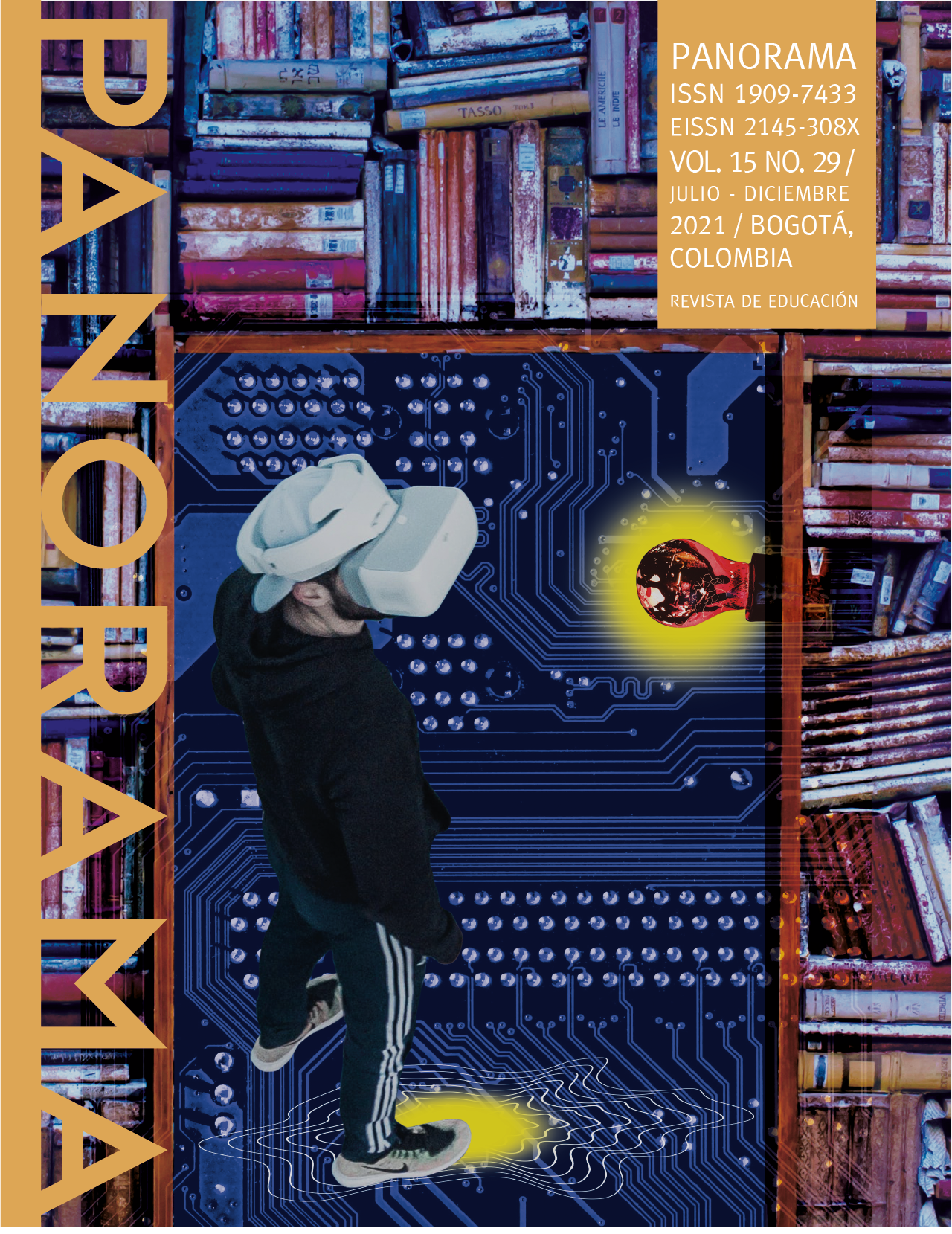Resumen
Este artículo presenta los resultados de un curso experimental de inglés con enfoque intercultural utilizando la metodología del aula invertida. Las unidades temáticas se desarrollaron con las 5 E de un modelo instruccional basado en el enfoque constructivista del aprendizaje. Este estudio cualitativo recogió datos de 20 estudiantes de la Universidad del Atlántico. Se analizaron los cuestionarios de dos rondas de encuestas que midieron las respuestas de los estudiantes en relación al aprendizaje del contenido, la metodología de la clase y la autonomía. Los resultados de la segunda encuesta nos permiten colegir las siguientes conclusiones: (i). Satisfacción con el uso de la estrategia del aula invertida en relación con el manejo del tiempo y libertad para preparar clases. (ii). Las actividades prácticas favorecen el trabajo colaborativo. (iii). La sutil presencia de los profesores brinda mayores oportunidades a los estudiantes para negociar el control y la participación. (iv) Aunque es posible aprender autónomamente, el apoyo del docente es importante para incrementar el aprendizaje. Estos resultados se discuten en el marco del componente didáctico de la enseñanza y sus implicaciones para esta universidad pública.
Referencias
Buil-Fabregá, M.; Martínez Casanovas, M.; Ruiz-Munzón, N.; Filho, W.L. (2019). Flipped Classroom as an Active Learning Methodology in Sustainable Development Curricula. Sustainability, 11, 4577. https://doi.org/10.3390/su11174577
Butt, A. (2014). Student views on the use of a flipped classroom approach: evidence from Australia. Business Education & Accreditation, 6(1), 33-44.
Byram, M. & G. Zarate. (1994). Definitions, objectives and assessment of socio-cultural competence. Strasbourg: Council of Europe.
Byram, M. (1995). Acquiring Intercultural Competence. A Review of Learning Theories. In T. Vestergard, (Ed.), Language, Culture and Identity (pp. 53-69). Aalborg University, Denmark.
Byram, M. (1997). Teaching and assessing Intercultural Communicative Competence. Clevedon, UK: Multilingual Matters.
Check, J., & Schutt, R. K. (2012). Survey research. In: J. Check, R. K. Schutt., editors. Research methods in education. (pp. 159-185). Thousand Oaks, CA: Sage Publications.
Chiu, C., Gelfand, M., Yamagishi, T., Shteynberg, G., & Wan, C. (2010). Intersubjective Culture: The Role of Intersubjective Perceptions in Cross-Cultural Research. Perspectives on Psychological Science, 5(4), 482-493. Retrieved April 17, 2020, from www.jstor.org/stable/41613455
Demetry. C. (2010). Work in progress: An innovation merging "classroom flip" and team-based learning. In Proceedings, 40th ASEE/IEEE Frontiers in Education Conference.
Estes, M. D., Ingram, R., & Liu, J. C. (2014). A review of flipped classroom research, practice, and technologies. International HETL Review, (4),7. Retrieved from https://www.hetl.org/feature-articles/a-review-of-flipped-classroom-research-practic e-and-technologies.
Foertsch, J. Moses, G. Strikwerda, J. and Litzkow. M. (2002). Reversing the lecture/homework paradigm using E teach R web-based streaming video software. Journal of Engineering Education-Washington, 91(3):267–274.
Hao, Y. (2016). Exploring undergraduates’ perspectives and flipped learning readiness in their flipped classrooms. Computers in Human Behavior, 59, 82–92. https://doi.org/10.1016/j.chb.2016.01.032.
Holliday, A. and MacDonald, M. (2019) Researching the intercultural: intersubjectivity and the problem with postpositivism. Applied Linguistics. pp. 1-20. ISSN 0142-6001.
Lage, M., Platt, G., & Treglia, M. (2000). Inverting the Classroom: A Gateway to Creating an Inclusive Learning Environment. The Journal of Economic Education, 31(1), 30-43. doi:10.2307/1183338
M.J. Platt, G.J. and Treglia M. (2000). Inverting the classroom: A gateway to creating an inclusive learning environment. The Journal of Economic Education, 31(1):30–43, 2000.
Manichander, T. (2016). Teacher and Teaching Process. Ashok Yakkaldevi.
Méndez, P. and Guerrero, C. H. (2018). “English Teachers’ profiles and technology-related professional development”. In Castañeda-Peña, H.; Guerrero, C.H.; Méndez, P.; Castañeda, J.; Díaz, J.; López, M.; Ramírez, M.; Rincón, L.; & Rodríguez, C. (2018). Technology in ELT: Achievements and Challenges for ELT development. UD Editorial. Bogotá.
O’Flaherty, J., & Phillips, C. (2015). The use of flipped classrooms in higher education: A scoping review. Internet and Higher Education, 25, 85–95. https://doi.org/10.1016/j.iheduc.2015.02.002.
Purdue University (2020). Improve your intercultural competence. Retrieved from https://www.futurelearn.com/courses/intercultural-competence
Reinhardt, J. (2018). “Social Media in the L2 Classroom: Everyday agency, awareness and autonomy”. In Castañeda-Peña, H.; Guerrero, C.H.; Méndez, P.; Castañeda, J.; Díaz, J.; López, M.; Ramírez, M.; Rincón, L.; & Rodríguez, C. (2018). Technology in ELT: Achievements and Challenges for ELT development. UD Editorial. Bogotá.
Siemens, G., Gašević, D., & Dawson, S. (2015). Preparing for the Digital University: a review of the history and current state of distance, blended, and online learning. Pg. 62. Athabasca University. Retrieved from http://linkresearchlab.org/PreparingDigitalUniversity.pdf
Soto-Molina, J. E. (2018). La interculturalidad en la adquisición del inglés: desde la diversidad hacia la equidad; (Interculturality in the acquisition of English: from diversity towards equity). FAIA, 7(31), 8.
Soto-Molina, J. E., & Méndez, P. (2020). Linguistic Colonialism in the English Language Textbooks of Multinational Publishing Houses. HOW Journal, 27(1), 11-28.
Strayer, J.F. (2012). How learning in an inverted classroom influences cooperation, innovation, and task orientation. Learning Environments Research, 15(2), 171-193.
Tomas, L., Lasen, M., Field, E., Skamp, K. (2015). Promoting online students’ engagement and learning in science and sustainability preservice teacher education. Australian Journal of Teacher Education, 40(11), 78–107. https://doi.org/10.14221/ajte.2015v40n11.5.
Tomas, L., Evans, N., Doyle, T., and Skamp, K., (2019). Are first year students ready for a flipped classroom? A case for a flipped learning continuum. Int J Educ Technol High Educ 16, 5 https://doi.org/10.1186/s41239-019-0135-4
Van Dijk, T. A. (2012). Discurso y contexto: un enfoque sociocognitivo. Barcelona: Gedisa.
Viveka S, Sagar T V, Sudha M J. (2017). Effectiveness of flipped classroom for teaching anatomy and students’ perceptions. Natl J Clin Anat, 1(6), p.71-81. http://www.njca.info/text.asp?2017/6/1/71/297658
Warter-Perez, N. and Dong J. (2012). Flipping the classroom: How to embed inquiry and design projects into a digital engineering lecture. In Proceedings of the 2012 ASEE PSW Section Conference.
Zappe, S., Leicht, R., Messner, J., Litzinger, T., & Lee, H. W. (2009). "flipping" the classroom to explore active learning in a large undergraduate course. ASEE Annual Conference and Exposition, Conference Proceedings.
Zeynep, Turan & Birgul, Akdag-Cimen (2019). Flipped classroom in English language teaching: a systematic review, Computer Assisted Language Learning, DOI: 10.1080/09588221.2019.1584117
Zainuddin, Z., & Halili, S. H. (2016). Flipped classroom research and trends from different fields of study. International Review of Research in Open and Distributed Learning, 17(3). https://doi.org/10.19173/irrodl.v17i3.2274.

Esta obra está bajo una licencia internacional Creative Commons Atribución-NoComercial-SinDerivadas 4.0.
Derechos de autor 2021 Panorama





